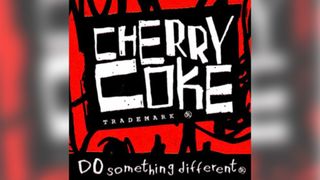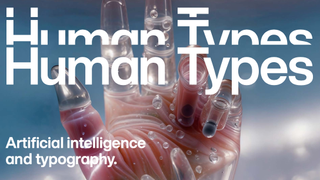How designers are rebranding marijuana
As more and more US states make it legal, Niall O’Loughlin of 99 Designs reveals how the branding industry is marketing marijuana.
The legalization of marijuana is a divisive issue but it seems as if the tide is slowly turning in its favour as public perception changes ever so slightly.
It is, of course, still illegal to buy it in general but the substance has been legalized for medical use in a number of states. At the last count, 23 states and DC allow the sale of medical marijuana, which of course means it is a growing and lucrative industry.
The era of marijuana being an 'underground' phenomenon appears to be coming to an end which means 'secret' branding techniques can now be replaced by more overt designs.
Like any multi-million dollar industry, the cannabis sector is in need of professional rebranding and it is a challenge that designers are only too happy to take on. Here we take a look at how designers are rebranding marijuana to make it more palatable to the general public.
These new companies have a big stigma to overcome, and designers are helping them to do so by professionally rebranding cannabis...
Rethinking the imagery
Recently merged with Dave Can Help, Canary's original branding, web, and app design was clean, mean and green.
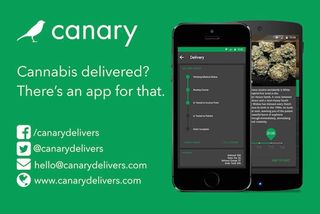
The brand used the famous green colour to maintain a link to cannabis' branding past, but they kept it subtle, not selecting to use a picture of the plant for their brand work.
Get the Creative Bloq Newsletter
Daily design news, reviews, how-tos and more, as picked by the editors.
Ditching the slang
Marijuana is known by many street names including 'pot', 'weed' and 'grass'; none of which are conducive to successful rebranding.
Therefore, designers know that it's better to use the language of scientists when describing the substance so advertisements will typically call it 'cannabis', 'marijuana' or 'THC'.
Immediately, this takes it away from shadowy street corners and into the light.
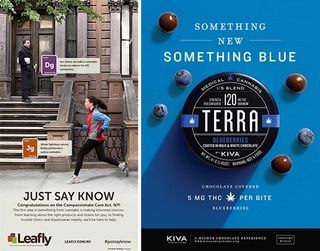
Advertisements by Leafly and Kiva Confections (above) were amongst the first. There are pretty significant rules and regulations surrounding the advertisement of these products, not to mention the stigma attached by many larger companies who don't want to be associated with the marijuana industry — larger search engines or newspapers, for example.
The Leafly advertisement on the left was the first national consumer cannabis advertisement in the New York Times, creating a lot of attention and hype at the time
Change the context
Unless you've been living under a rock all your life, you will be aware that the use of marijuana is associated with one thing; getting high.
Much of the public has little knowledge of the substance and automatically places it in the 'illegal drug' category right alongside cocaine and heroin.
In reality, marijuana has many uses ranging from skincare to pet supplements. It is important for people to understand that there are forms of the substance that DON'T produce a 'high'.
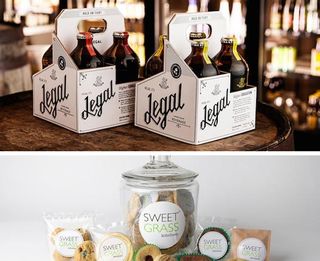
Mirth Provisions and Sweetgrass Kitchen (above) package their edible products, a huge new piece of the puzzle.
In legalized states, there's lots of debate going on about the regulation of THC (the active ingredient in that marijuana high) and how much can be present in these types of goods.
Therefore, a company selling pet supplements, which contain marijuana, will need to do a very different campaign to one that sells skincare products featuring the substance. This of course means detailed research and a variety of considerations need to be taken into account:
- Legality: There are still a lot of states where the use of marijuana for certain purposes is illegal so you need to find out what you are allowed to say. It is important to note that laws can change and the public may turn against legalization. Companies like Cannabrand are trying hard to increase public support of marijuana and even have a blog called 'CannaBuzz' which has posts describing the lives of people within the industry.
- Service & Product Type: Marijuana comes in a surprising number of forms and should no longer be seen as something that is just 'smoked'. As we mentioned above, it is now used in skincare products, supplements for pets and is even available in drinks! Branding experts must create an individual approach for each.

- Audience: With so many products, it is only natural that there are different customer bases for each one. Animal lovers will want something for their pets; women may look for the skincare option while busy professionals might look for the drinkable or edible versions of the substance. Additionally, some people know exactly how to use it while others have no clue. This has to be taken into account with branding campaigns altered accordingly.
- Size of Enterprise: As it is a fledgling industry, the majority of marijuana sellers are likely to be small scale. However, there are a few people keen to branch out so with a greater reach comes the need for a different approach.
What happens next?
Colorado is one of the states where medical marijuana is legal and its Department of Public Health & Environment has stepped up to the plate with its excellent Good To Know campaign. It educates members of the public about the substance and seems to have covered all bases with video and print campaign, which offers information to younger and older members of the public.
The Colorado Department of Public Health & Environment's educational website for Good To Know is a great example of how branding is growing up around the entire industry, not just dispensaries.

This should be an inkling of what's to come as we expect more and more companies to embrace a more professional attitude when it comes to the branding of marijuana.
The market for this substance is already enormous and is estimated at approximately $2.7 billion; by 2018, this figure is expected to exceed $8 billion. Additionally, there is already a massive existing customer base with an estimated 50% of Americans admitting to consumption of the product.
In other words, the only thing holding back the industry is the stigma that is still attached but with clever professional rebranding, even this barrier is set to be dismantled by design. All around the world, companies are embracing crowdsourcing as a means of finding branding teams with the creativity and innovation to finally make marijuana use become seen as socially acceptable.
Words: Niall O'Loughlin
Niall O'Loughlin is marketing manager for 99designs, an online graphic design marketplace that enables customers to quickly source graphic design work.
Like this? Read these!
- 10 effects drugs could have on your art
- How to build an app: try these great tutorials
- Our favourite web fonts – and they don't cost a penny
Enter the 2015 Brand Impact Awards
On 9 July, Yeoman will be judging at Computer Arts' Brand Impact Awards 2015 – which celebrate the best branding across over 20 different market sectors – joining a stellar panel of talented creative directors at top agencies including GBH and The Partners.
The deadline is 18 June so get in your entry today!

Thank you for reading 5 articles this month* Join now for unlimited access
Enjoy your first month for just £1 / $1 / €1
*Read 5 free articles per month without a subscription

Join now for unlimited access
Try first month for just £1 / $1 / €1
The Creative Bloq team is made up of a group of design fans, and has changed and evolved since Creative Bloq began back in 2012. The current website team consists of eight full-time members of staff: Editor Georgia Coggan, Deputy Editor Rosie Hilder, Ecommerce Editor Beren Neale, Senior News Editor Daniel Piper, Editor, Digital Art and 3D Ian Dean, Tech Reviews Editor Erlingur Einarsson and Ecommerce Writer Beth Nicholls and Staff Writer Natalie Fear, as well as a roster of freelancers from around the world. The 3D World and ImagineFX magazine teams also pitch in, ensuring that content from 3D World and ImagineFX is represented on Creative Bloq.
